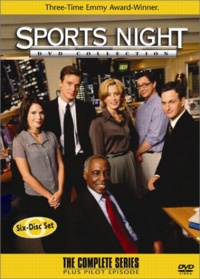Over lunch today I was reminded of the day I parked in the Premier’s parking spot by mistake.
About eight years ago, I was delivering some computers to the Legislative Assembly, and I pulled right up to back driveway to unload. I was inside for no more than half an hour, and when I came out there was a carefully written note under my windshield wiper:
You are Parked in the Premiers Parking Spot
It was signed simply “Commissionaire.”
That was it.
That note, in its own small way, was responsible for keeping us on Prince Edward Island. I saved the note, and it’s sitting beside me at the computer as I write this.
 One of the things that the hipnocrats and I discussed at the putative blogger meeting was music. I admitted to having stopped paying attention to popular music about 20 years ago, and asked for an update on what was going on.
One of the things that the hipnocrats and I discussed at the putative blogger meeting was music. I admitted to having stopped paying attention to popular music about 20 years ago, and asked for an update on what was going on.
This prompted me to try and remember, this morning in the shower, all the 45s I’d purchased before I was 18. There weren’t many of them:
- You Light Up My Life by Debbie Boone (with He’s a Rebel on the B-side)
- Baby Come Back by Player
- Da Doo Ron Ron by Shaun Cassidy
- The Rose by Bette Midler
- Escape (The Pina Colada Song) by Rupert Holmes
I also owned a copy of Barry Manilow Live.
I realize, as I type this, that I was (am?) a complete music dork. And this is me, son of a man who owned Sgt. Peppers, Clouds and an excellent collection of jazz music from the 60s and 70s.
Who knows where Oliver’s musical tastes will lie.
I will note, simply for the record, that the big “bloggers meetup” here in Charlottetown represented a watermark in the long slow slide of weblogs into irrelevance. Not even Will,
who organized the meeting was in attendance. If the guys from silverorange hadn’t been at the Churchill Arms already anyway, it would have been just me and Johnboymorris. Not that there’s anything wrong with that, but two bloggers does not a rallying cry make.
So it’s over now. Dan James thinks the Next Big Thing is cuisine.
 Back in March I wrote about Sports Night, a show on ABC that ran from 1998 to 2000. At the time, the boxed set of the complete series had just been released. Last night I was able to rent it for the first time from That’s Entertainment (our gem of an independent video rental store here in Charlottetown).
Back in March I wrote about Sports Night, a show on ABC that ran from 1998 to 2000. At the time, the boxed set of the complete series had just been released. Last night I was able to rent it for the first time from That’s Entertainment (our gem of an independent video rental store here in Charlottetown).
And last night, in an irrational display of stayupitude, I watched 9 episodes in a row, starting from the Pilot.
I was as compelled — maybe even more so — by the second viewing as the first. This is truly great television.
Am I deluded? Am I the only one that thinks the Sports Night raised the bar for situation comedies, and that nothing else since has come close?
Today, as Catherine is off in Orwell eating lunch with her weaving and spinning friends, Oliver and I have worked out a strict regimen of “one episode of Caillou, one episode of Sports Night,” interspersed with house cleaning.
I’m in the later stages of moving my operation 4 blocks away to the new silverorange/Reinvented mediaplex on Fitzroy Street. One thing I have to do is move my business telephone line.
If I switch to Eastlink as part of making the move, my monthly phone bill, for identical Centrex service, will go from $44.70 to $32.50. And Eastlink won’t charge me anything for installation.
If I stick with Aliant, they will charge me $110 for the move, plus $35 to install a phone jack.
Over a year, then, sticking with Aliant would cost me an additional $291.
Is there any compelling reason for not doing this?
How are we ever going to train our ears to not get lushed out by the sound of a smoke- honed voice? Like red-painted lips that make the heart race, the voice ravaged by relentless smoking somehow maintains its allure even though we know that it ultimately harms the practioner.
Postscript: there are people keeping track of smokers. I don’t know whether this is creepy or brave.
Angus Orford sent me the photo on the left yesterday (it came to him via Cathy Large) of the house he owns on the corner of Prince and Richmond Streets in Charlottetown. It was taken in 1904. The house on the left is our house.

I took the photo on the right this afternoon, roughly 99 years later.
Ignoring the fact that the 1904 photo was taken from a higher angle, and leaving out the power lines, the home renovations, and the trees that have had a chance to grow in the intervening years, it’s remarkable to me that this corner is much as it was.
I’m usually not one of those “heritage people,” but I gotta say that the notion that as I type this I’m sitting in a room that has been here for 176 years does kind of blow my mind.
 It used to be that the television character I identified most with was Edmund on All My Children.
It used to be that the television character I identified most with was Edmund on All My Children.
I realized this morning that I have far more in common, these days, with Daddy on Caillou.
In other words, I’m no longer a manly, daring, swashbuckling journalist fighting for the rights of Pine Valley citizens, I am a docile father who wears sweaters and cuts out cardboard houses for pretend horses.
I’m not complaining. I just wish that, somewhere between Caillou’s dad and Edmund there were some realistic male characters on television for me to empathize with. Somehow John Belushi and Ray Romano don’t cut it.
Apparently Aliant has cancelled their One Number Direct service: I called this morning to ask if it was available in Charlottetown yet, and was told by the operator that the entire project had been cancelled. I suggested they update their website, which caused him to laugh.
This was one service from Aliant I was actually looking forward to. This, of course, is why it was cancelled.
“Can I speak to Peter Rukavina?”
“Speaking.”
“Hi, this is Eric calling from Apple Computer. I’m calling about your iMac”.
“Okay.”
“Just calling to see how everything’s going…”
“It’s going just fine; I had a little bump in the road there with a hard disk problem, but it’s purring along just fine now.”
“Okay, that’s great, thank you for your time.”
 I am
I am